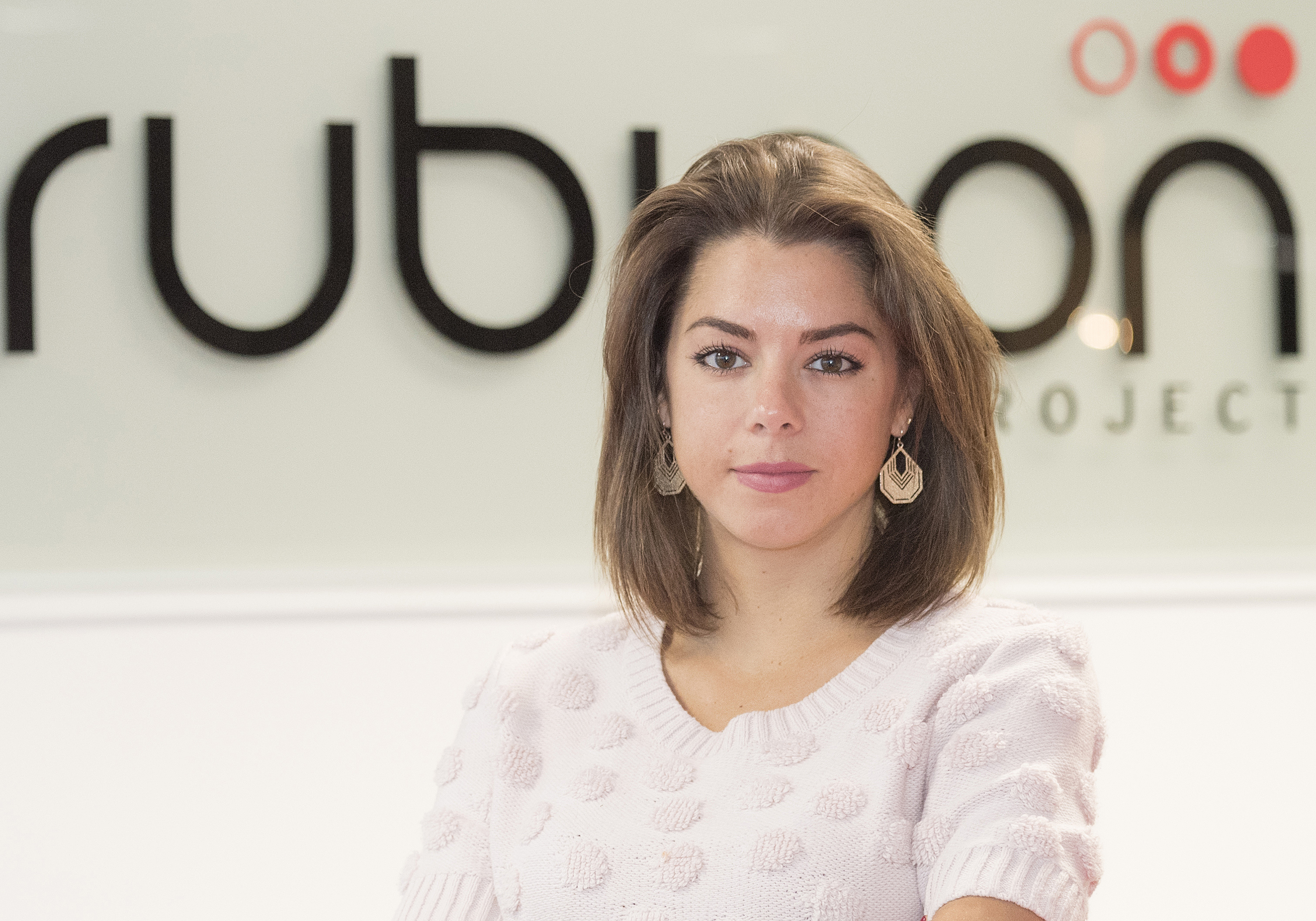Rubicon Project Helps Raise the Curtain on Audio Programmatic

As digital audiences attract more listeners, advertisers are steadily increasing their audio budgets, but they also want the market to be as transparent and efficient as possible. To achieve that, more publishers and buyers are turning to audio programmatic ad buying using real-time marketplaces and online platforms to transact inventory. While it is already widely used for digital media, programmatic is beginning to take root in audio, but the industry still needs an education.
That's where programmatic veterans like Rubicon Project's Head of Strategic Mobile Accounts and Programmatic Audio Nina Harvey come in. Rubicon Project is a global advertising infrastructure firm that facilitates the buying and selling of ad inventory. It expanded to digital audio two years ago, partnering with Spotify to make the streaming giant's inventory available to purchase programmatically, and has been steadily growing its client roster and transaction volume. Harvey spoke to MediaVillage about how programmatic benefits audio, the difference between streamed audio and podcasts and why digital audio offers brands so much value.
Alli Romano: There may be people reading this that have heard of programmatic ad buying, but don't really understand it. Can you give us a primer?
Nina Harvey: Programmatic buying is really the transacting of publisher inventory across any potential format -- be that display, video, audio, out-of-home, TV -- being sold through programmatic pipes in real-time. Buyers utilize a demand side platform that connects into an exchange or supply side platform, where publishers make their inventory available, and then buyers bid in real-time in an open or private marketplace. There are huge advantages to programmatic buying. There's the speed of execution and it removes a lot of the traditional processes involved in buying media. You have machines doing everything for you, so it is far more efficient and cheaper and can be done 24/7, 365 days a year, in any market.
Romano: How has programmatic expanded to audio and what are the advantages?
Harvey: The overall benefits of buying and selling programmatically apply similarly to audio. The ease of audio activation as another format for buyers and sellers to transact across has meant spend has transitioned relatively easily into the audio space. There are, of course, nuances to audio that need to be taken into consideration, but the same can be said for buying in any specific environment like video, mobile app or DOOH. A huge amount of audience is available in audio, whether it is podcasting, radio news, music or spoken word audio content. We've seen a really healthy increase in general revenue and new buyers. Some brands have been testing and then reinvesting in audio buying programmatically, and new sellers are making inventory available.
Compared to the more established formats, audio is smaller than traditional display. That's because there hasn't been as much scale across audio inventory. For example, you can have five ads on one page when you're a display publisher. As an audio publisher, you can only serve one ad at a time. It presents a fantastic opportunity for brands to have a one-to-one engagement and have a complete share of voice with a particular user or a particular customer. But it does mean then that volumes are naturally just slightly smaller.
Romano: Among all the advertising options, what's special about digital audio?
Harvey: You're literally between that person's ears. It's such an intimate environment. When it comes to anything else -- on a phone or on desktop or even out-of-home -- there are so many other stimuli. In the audio space, you're there and the ability to be an emotive, thoughtful brand that connects to audiences is really unique. That only exists in audio.
Romano: How are you seeing the programmatic audio marketplace expanding?
Harvey: We're seeing huge growth coming into the marketplace consistently, which is a testament to audio as a medium, and also the results it is delivering for brands like Coca-Cola, Dell, Allstate, T-Mobile and Xfinity, as well as categories like telco, retail, FMCG, automotive and finance. Also, brands that have been working in podcasts are starting to spend in the streamed programmatic space as well, which is brilliant. At a broad market level, having two of the major players involved (Spotify and Pandora) selling audio inventory programmatically really legitimizes audio as a solution for buyers to be accessed at scale.
Romano: You mentioned podcasting and streamed audio. When it comes to programmatic, what's the distinction?
Harvey: In the downloaded space, which includes podcasts, programmatic audio really has not scaled. It's still a tiny proportion of the amount of revenue that is being generated. Streamed audio is more advanced because it is happening in real time, just like programmatic buying. Therefore, that's a very natural transaction. But in the podcast world, you have downloaded inventory where the majority of podcasts are downloaded onto somebody's device. The content could have an ad inserted into it, but it might not actually get listened to in that moment, in that day, that week, that month or at all. So, if you're trying to buy something in real time and that content then is not listened to, it represents challenges to effectively monetize and make sure your dollars are being spent wisely.
There's a huge amount of value to podcasting. You've got the rise of Millennials and Generation Z, and they're consuming more and more audio content. You're also seeing adults over 55 increasing their podcast listening. For brands, there might be some limitations [with buying podcasts programmatically] but there is a huge amount of opportunity. This is not a programmatic issue; this is buying into the downloaded environment challenge.
Romano: Do you find that agencies are comfortable with digital audio and programmatic buying?
Harvey: There are still challenges with getting audio out of the agencies' broadcasting teams and bringing it more into the digital team and mainstream digital conversation. You see, agencies are making more of an effort and I think they value platforms like Rubicon Project that provide them with omnichannel solutions where they can access all different types of inventory rather than having to go to point solution marketplaces. That just helps the money flow more effectively from the buy side over to the sell side.
Romano: What needs to change on the creative side?
Harvey: Digital audio is not the same as radio. You can't just repurpose a radio ad and whack it into a digital audio campaign. It also can't be taking audio from the video ads, for example, and putting that into a digital audio campaign. Digital audio is a unique environment and you should plan your campaigns and your creative appropriately. Additionally, there is a huge amount of creativity that brands can utilize through Dynamic Creative Optimization (DCO) to build campaigns with a variety of assets, triggered by specific data points to deliver conscious and subconscious personalized messaging to catch attention and build awareness. It's established, it's performing and it's working well for our clients. They're continuing to reinvest, which a testament to the results.
Click the social buttons above or below to share this story with your friends and colleagues.
The opinions and points of view expressed in this content are exclusively the views of the author and/or subject(s) and do not necessarily represent the views of MediaVillage.com/MyersBizNet, Inc. management or associated writers.


